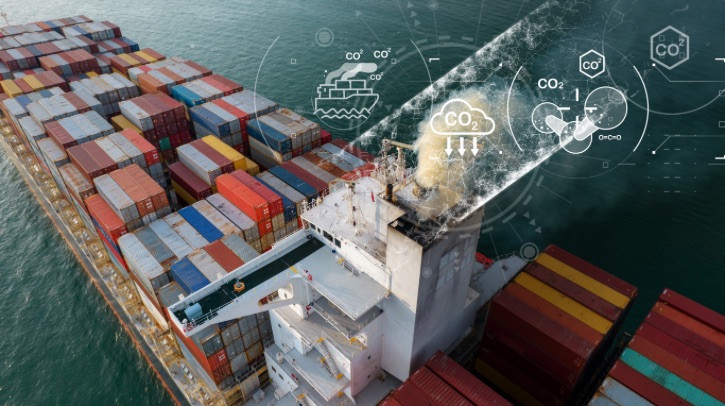The European Maritime Safety Agency (EMSA) and the European Environment Agency (EEA) have released the second edition of the European Maritime Transport Environmental Report, which highlights that the use of alternative fuels and sources of power has increased, although from a low base.
However, the organization states that, as it currently stands, some prospective alternative fuels will need to significantly increase production to be able to meet potential demand; and it asserts that harmonized international guidelines will have to be developed and a supply of seafarers trained on new decarbonization technologies.
Overall, it concludes that Europe’s maritime sector is making progress toward greater sustainability but will need to increase its efforts over the coming years to meet EU climate and environment goals aimed at reducing energy use, pollution and greenhouse gas emissions as well as better protecting biodiversity.
Key environmental impacts
Methane (CH₄) emissions have at least doubled between 2018 and 2023, accounting for 26% of the transportation sector’s total methane emissions in 2022. This is largely attributed to the increased use of liquefied natural gas (LNG).
Air pollution
Sulphur oxides (SOx) emissions in the EU have dropped by about 70% since 2014, largely due to the introduction of SECAs (Sulphur Emission Control Areas) in Northern Europe. The Mediterranean SECA, set to take effect on May 1, 2025, is expected to contribute further reductions together with the one upcoming in the Northeast Atlantic Ocean controlling both SOx and NOx. Meanwhile, nitrogen oxide (NOx) emissions rose by an average of 10% between 2015 and 2023, making up 39% of transportation-related NOx emissions in 2022.
Water pollution
Maritime transportation contributes to water pollution through oil spills and operational discharges such as grey water, and water discharges from open-loop exhaust gas cleaning systems (EGCS), which are used to reduce sulphur oxides (SOx) emissions to the atmosphere, account for 98% of permitted discharges. EGCS release contaminants into the water, highlighting the trade-off between reducing air pollution and increasing marine pollution. Discharge of grey water, driven largely by cruise ship operations, increased by 40% between 2014 and 2023.
Underwater noise
New pan-European models reveal high underwater radiated noise (URN) levels in the English Channel, Strait of Gibraltar, Adriatic Sea, Dardanelles Strait and Baltic Sea regions. Mitigation measures could reduce URN by up to 70% between 2030 and 2050.
Marine litter
Marine litter from fisheries (11.2%) and shipping (1.8%) has halved over the past decade. However, challenges persist, particularly with plastic pellet pollution from lost containers.
Impacted seabeds
Approximately 27% of Europe’s near-shore seabed (5% facing severe effects) is affected by maritime transportation-linked activities such as port expansions, dredging and anchoring, which lead to physical disturbances and habitat loss.
Achieving sustainability
Apostolos Tzitzikostas, commissioner for sustainable transport and tourism, commented, “The new European Maritime Transport Environmental Report is a valuable guide for the future of European shipping, one that is both sustainable, competitive and resilient. This report is also a call to action. By working together, we can ensure that maritime transport remains a key player in our global economy, while minimizing its environmental impact and safeguarding our oceans for future generations.”
Jessika Roswall, EU Commissioner for Environment, Water Resilience and a Competitive Circular Economy, added, “Our waters are under pressure from climate change, biodiversity loss, mismanagement and pollution. This is why I will launch an EU Water Resilience Strategy. We need a paradigm shift on how we value water, to preserve water quality and quantity and to boost the competitive edge of our water industry. We need a ‘source to sea’ approach as activities at sea are closely linked to those on land. Now is the time for transformative change in maritime and water sectors so we can make Europe water-resilient.”
Maja Markovčić Kostelac, EMSA’s executive director, said, “Continued action and increased innovation are needed to accelerate the progress made towards more sustainable maritime transport in Europe – across all its operations – to reach the ambitious targets of the European Green Deal while preserving the competitiveness of the sector. Our joint report is intended to provide policymakers and citizens with a factual, evidence-based assessment of the current and future challenges to the sector’s decarbonization journey, as well as the opportunities that digitalization and advanced technology can bring for the green transition of maritime.”
In related news, the International Chamber of Shipping (ICS) Publications recently released the second edition of ‘Reducing Greenhouse Gas Emissions: A Guide to International Regulatory Compliance’. This updated resource provides shipowners, operators and managers with guidance on navigating the increasingly complex regulatory landscape of maritime decarbonization. Click here to read the full story.



